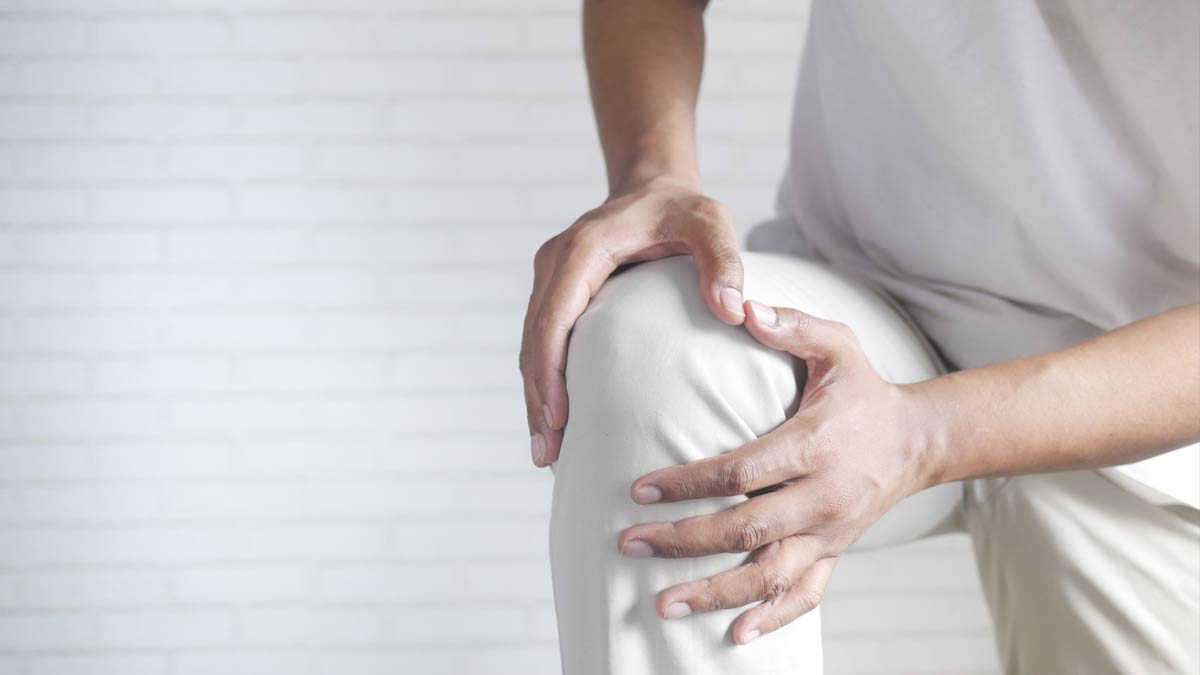That aching knee, sore shoulder or painful elbow can be the result of a variety of different issues, and there are many ways to treat both the cause and the discomfort that can keep you up at night, limit your physical activities and affect your quality of life.
Arthritis, often an affliction of the elderly, might be the culprit. Osteoarthritis causes cartilage to break down where bones meet to form a joint, while rheumatoid arthritis is an immune disease that causes inflammation in the lining of a joint. However, an injury suffered recently or even a decade or more ago – whether while participating in sports, through a significant fall or in an automobile accident – also can be the source of your misery.
“It can be a fall 10 years ago or a broken ankle as a kid,” explained Dr. Michael Sims, a surgeon with Bon Secours Piedmont Orthopaedics in Greenville.
Dr. Sims said a good place to start when a patient visits with joint pain is to take X-rays, which can indicate if there has been any structural change in the bones.
“X-rays don’t show ligaments, tendons or cartilage, but you can see evidence that these things have been damaged,” he said. “You can’t see everything, but you can infer things.”
“An X-ray is a good place to start because it’s inexpensive and safe,” Dr. Brett Young, an orthopedic surgery specialist with Roper St. Francis Physician Partners in Charleston and Summerville, added. “It gives us a big-picture view of the joint. That would be the first move before an MRI.”
Dr. Young went on to explain that in many cases, he would use an MRI only to help confirm or rule out a suspected diagnosis.
“If a possible diagnosis would change the course of treatment, that’s when an MRI is valuable,” he said.
Dr. Sims pointed out that he would order an MRI to evaluate the joint “at a deeper level” if the patient was not improving with options including over-the-counter or prescription medications; a brace for a knee or ankle; or physical therapy. He noted that seeing a physical therapist usually is a better option than doing exercises on your own.
“They chaperone you. They instruct you, providing guidance and instruction so you get the most out of the exercises,” he said. “They can critique your form. It’s very helpful to have a therapist to make sure you are doing it the right way.”
He added that physical therapy generally lasts a minimum of four to six weeks but can take up to three months for some patients to show some improvement.
Dr. Young pointed out that rehab can be useful, depending on the injury. He said it sometimes is necessary because, as people age, they might develop poor mechanics that lead to joint pain.
The option of using a knee or ankle brace to immobilize the joint can be helpful, Dr. Sims noted, but only if you are using the right type of brace. He said patients often come in with a brace they purchased.
“Usually, it’s the wrong type and it’s not adequate. Before you treat yourself with a brace, get evaluated to make sure it’s worth your money,” he cautioned.
Other options to help with joint pain include cortisone injections, which reduce inflammation, and platelet-rich plasma – which is still considered to be an experimental therapy and, hence, is not covered by many insurance policies. With PRP therapy, a patient’s blood is drawn, then the platelets are separated out and injected back into the injured area, using the patient’s own healing system to ease the joint pain.
Both physicians agreed that the results using PRP have been mixed.
“There’s science that proves that there is benefit to PRP. The problem is, we haven’t identified who it works on the most. We have ideas and theories, but we haven’t identified the exact patient who would benefit or the exact right recipe for these injections,” Dr. Sims said.
“I don’t think we want to use it in every situation,” Dr. Young added. “It’s important for the physician to assess the patient’s particular reason for having joint pain and to take into consideration other things that have been done before deciding.”
Dr. Sims said he sometime treats his patients with injections of hyaluronic acid, a compound that the body makes naturally – usually three injections over a period of six weeks. He pointed out that this option “replaces a natural substance in the knee to oil it up.”
Some people try to alleviate their joint pain by taking glucosamine and chondroitin. Sometimes these supplements help, and sometimes they don’t. Both physicians agreed that they have no adverse side effects.
“It would depend on why you are taking them,” Dr. Young said. “For osteoarthritis situations, there are no cure-alls. At best, they may slow down the progression, and, at worst, they may do nothing.”
If all else fails, surgery is an option as well.
The worst thing a person with joint pain can do is nothing, according to Dr. Sims. He said totally eliminating physical activity because, for example, your arthritic knee hurts, could lead to additional pain and suffering.
“Continuing to perform activities as much as you can is beneficial,” he commented. “Your body stops trying to heal your knee because you’re not using it. If it hurts to walk, maybe you should try a stationary bike. Whatever you can do to stay active is the best thing you can do to help your joints.”
By Brian Sherman







